
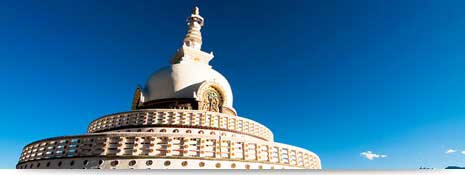
Ladakh, open to tourism only since 1974, is a land of high passes, bounded by the Karakoram and the mighty Himalayas. The Indus with its tributaries acts is the lifeline for Ladakh's scanty population.
Ladakh covers an area of 97,000 sq kms, and has an average elevation of 3,500 m. It is often called 'Little Tibet', because of its topographical and cultural similarities with neighbouring Tibet. In the early days, Ladakh played an important role being strategically placed at the crossroads of important trade routes to Central Asia. This now remains in the past, with China having sealed off the borders of Tibet and Central Asia.
The rugged, arid Ladakh mountain-scape has been the subject of many a photographer and destination of world-class mountaineers. Its brackish lakes at high altitudes, picturesque peaks, charming mountain villages, expansive meadows, wildlife, monasteries, rich heritage, awesome physical features, and remoteness sets it apart from other favourite holiday hot-spot.
Ladakh provides great opportunities for adventure sports such as river rafting, trekking, mountaineering and mountain biking. Adventure tourism has contributed in a big way to Ladakh's economy.
Ladakhis are sweet natured, hard working and fun loving people marking every occasion with festivities. There are a number of Monastic festivals held through out the year, whose dates are decided according to the Tibetan calendar. During summer, most villages hold colourful archery festivals and contests, while most of the religious and scio-cultural events are held during the winter.
The Ladakhis are largely dependent on cattle. They comprise a predominantly Buddhist population with the only exceptions of Kargil and the Suru Valley which is inhabited by Shia Muslims and share cultural similarities with Baltistan, now in Pakistan.
The main languages spoken are Ladakhi, Purik, Tibetan and English.
Being in the rain shadow of the Himalayas, it is generally dry, with hot and dry temperatures during summers, and cold and dry during winters.
Its winter season is long with temperatures dropping to minus zero, and summer, warm with cool nights. Temperatures of -60 have been recorded in Drass.
The best time to visit Ladakh is between May and October.
There is an airport at Leh, which is well connected to Delhi, Chandigarh and Srinagar.
By road, Leh is connected to Srinagar and Manali.
The Ladakhi population is predominantly Buddhist, similar to the religion and culture, of Tibet and Central Asia. Buddhism was propagated to Tibet from India through Ladakh.
The early history of Ladakh is not clear, and documentation done pertained mostly to the religious. It is believed that the Khampa nomads of Tibetan origin were the first inhabitants of Ladakh.
There is a wide variety of handicrafts available in Ladakh, ranging from pashmina shawls to Tibetan styled rugs and silver jewellery, to tangkhas, emphasizing the importance of Ladakh..
Ladakhi food is adapted to the harsh climactic conditions of the place. There are, of course, several multi-cuisine restaurants in Ladakh, owing to the volumes of foreign visiting tourists.
Ladakh has a rich heritage of folk dance. The dances are elaborate, colourful, and majestic, with mostly slow and gentle movements matched by the richly adorned peraks (head dress), and music.

Best of Leh - Kashmir
Duration : 17 N / 18 D
Routing : Srinagar - Gulmarg - Pahalgam - Sonmarg
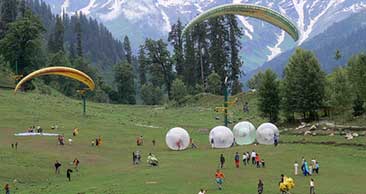
Best of Leh - Manali
Duration : 18 N / 19 D
Routing : Amritsar - Dharamshala - Manali - Sarchu

Glimpses of Leh - Ladakh
Duration : 9 N / 10 D
Routing : Leh - Lamayuru - Alchi – Likir
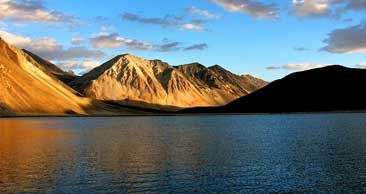
High Altitude Lake Tour
Duration : 9 N / 10 D
Routing : Leh - Uleytokpo - Pangong Lake
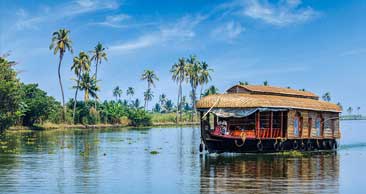
Kerala with Ladakh
Duration : 20 N / 21 D
Routing : Cochin - Munnar - Periyar - Kumarakom
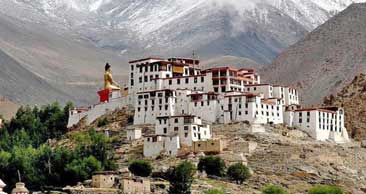
Ladakh Cultural Tour
Duration : 8 N / 9 D
Routing : Leh Monasteries - Lamayuru - Alchi

Ladakh with Golden Triangle
Duration : 17 N / 18 D
Routing : Delhi - Jaipur - Agra - Delhi – Leh - Lamayuru

Ladakh - Kashmir Tour
Duration : 11 N / 12 D
Routing : Delhi - Leh - Pangong Lake - Leh - Alchi
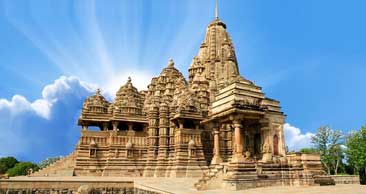
Ladakh with Classical India
Duration : 21 N / 22 D
Routing : Delhi - Jaipur - Agra - Jhansi - Khajuraho
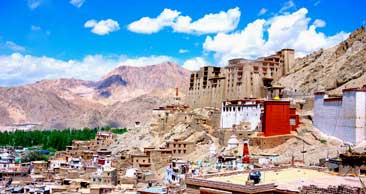
Ladakh with Taj
Duration : 16 N / 17 D
Routing : Delhi - Agra - Leh Monasteries - Lamayuru